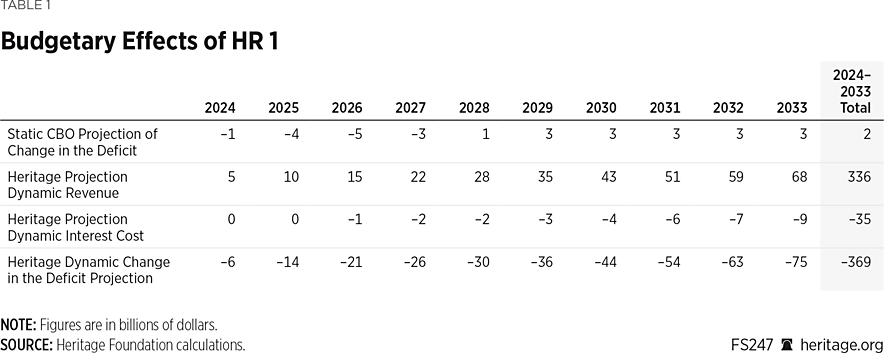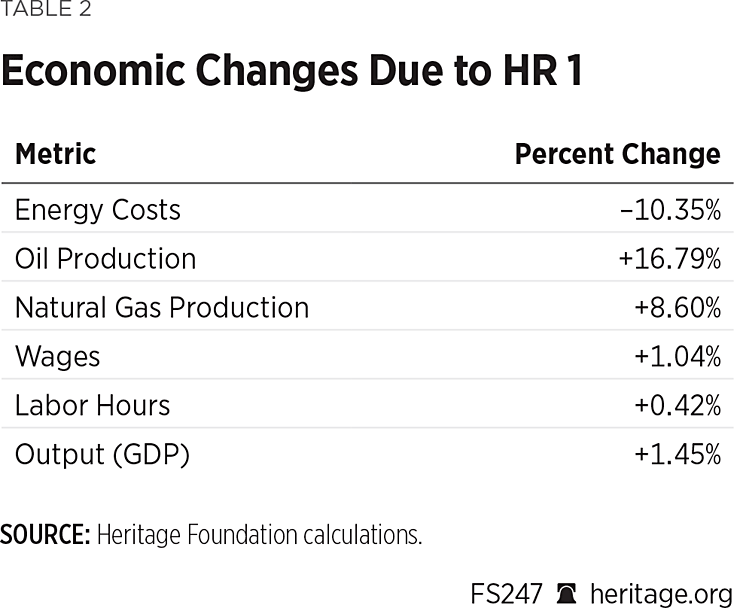As the House of Representatives takes up debate on the Lower Energy Costs Act (H.R. 1),REF lawmakers should know how the prospect of an expanded energy supply will affect household energy expenses, jobs, and incomes. The Heritage Foundation has conducted a preliminary estimate of the economic effects of H.R. 1. The primary economic effects of the bill are the result of:
- Regulatory reform regarding the leasing of public land for energy production.
- Permitting reform to streamline the process of building energy infrastructure.
- Reductions in taxes, fees, and spending.
Using current economic data as a reference,REF the policies in H.R. 1 are projected to:
- Lower energy costs by $795 per household per year.
- Increase oil production by 2.03 million barrels per day.
- Increase natural gas production by 10.3 billion cubic feet per day.
- Increase wage and salary income for the median worker by $564 per year.
- Increase employment by 667,000 jobs.
- Increase gross domestic product (GDP) by $379 billion per year.
- Increase household income by $2,890 per household per year.
Furthermore, we expect economic growth to raise federal revenues and lower interest outlays over the 10-year budget window.
- Larger tax bases would lead to an additional $336 billion in revenue.
- Additional revenue would reduce the need for federal borrowing, which in turn would reduce interest rates and expenses.
- The combined effect would reduce the deficit by $369 billion from fiscal year (FY) 2024–FY 2033 relative to the static score produced by the Congressional Budget Office.


Model Notes
- To produce timely results, the economic estimates were derived from a simplified model of the U.S. economy and energy markets rather than the complete Heritage Energy model.
- We use a three-factor model of production relating output to capital, labor, and energy inputs.REF
- Energy input is a composite of five primary energy sources: petroleum, natural gas, renewables, coal, and nuclear.
- Changes in the price of one type of energy shift demand for substitute forms of energy.
- Increases in energy as a factor of production raise output.
- Larger quantities of energy supplied raise demand for capital and labor.
- Based on our judgment, we believe that the provisions in H.R. 1 to reform the regulatory and permitting policies regarding energy production will:
- Increase the supply curve of petroleum by 25.5 percent,
- Increase the supply curve of natural gas by 16.5 percent,
- Increase the supply curve of coal by 14 percent, and
- Increase labor and energy productivity by 1 percent.
- Supply shifts in the energy market affect markets for capital and labor.
- Increased energy supply will lower the average price of energy.
- Increased energy supply and increased productivity will increase demand for capital and labor.
- The full effects of the policy change should be realized within 10 years.REF





